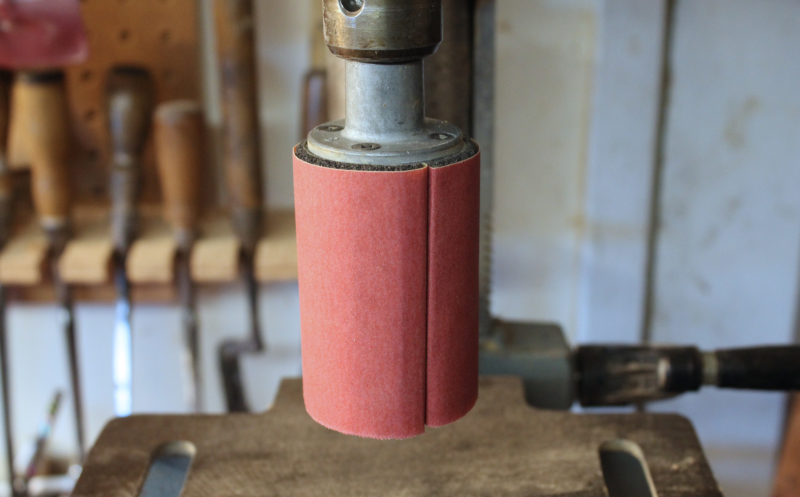 photographs by the author
photographs by the authorI most often use my decades-old 2″ drum chucked in my drill press and wrapped in fine-grit sandpaper.
My main drum sander is a simple shop-made affair: a plywood box containing a salvaged motor fitted with a chuck to hold a 3″ sanding drum. With a 60-grit sanding sleeve on the drum, it’s a real workhorse when it comes to smoothing curves, but I don’t use it for finish work. Sleeves with finer grits are available, but they’re $4 apiece, hard to get on and off the rubber drum, and too stiff to smooth radiused edges. For finer work, I’ve been using sleeveless sanding drums. They are built around rigid foam cylinders and hold strips of common sandpaper. The exterior of the cylinder is padded with a layer of 1/8″ neoprene, and one end of the cylinder is fitted with a cast-aluminum flange and a steel axle. The ends of the sandpaper strip are tucked into a slot in the drum and led to a long, round hole where a length of steel oval tubing rotates to secure them. A lever is inserted into the tubing to rotate it, but a straight-bladed screwdriver will do the job just as well when that little lever included with the drum goes astray.
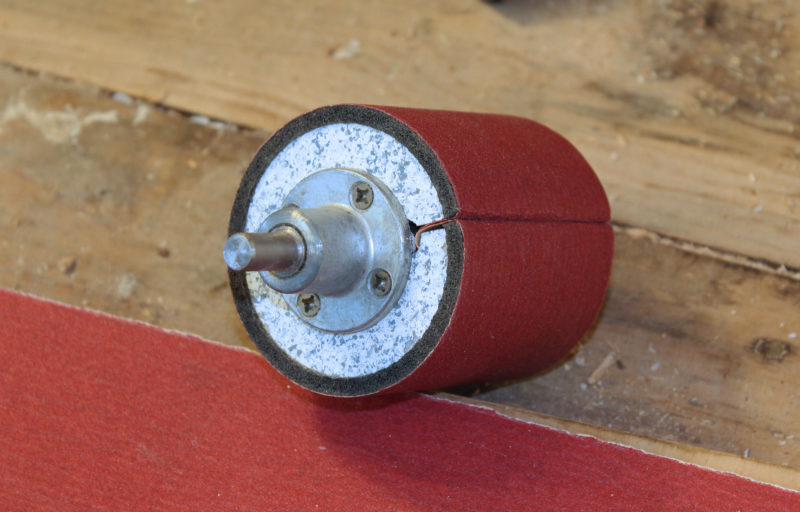
The the drive shaft has a diameter of 1/2″ where it joins the fitting on the drum, but is reduced to 3/8″ to fit most drills.
The literature describes the drum’s core as foam, but it is quite hard and very durable. I’ve had my 2″ drum for close to 30 years and it is still going strong. The system for holding the sandpaper was getting a bit loose, but a wrap of making tape around the oval tube cured that. I recently bought a 3″ drum; it appears to be made of the same materials, and I expect it will hold up just as well.
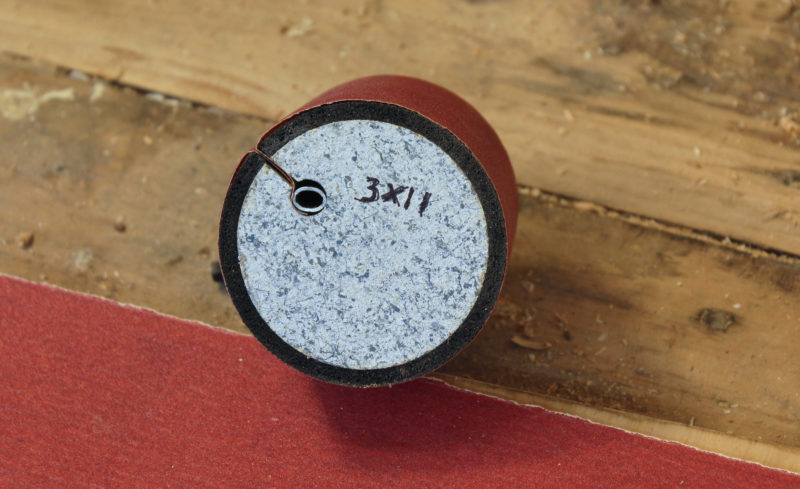
A keyhole slot traps the ends of the strip of sandpaper and an oval steel tube locks them in place. I’ve marked the drum with the size of the sandpaper strip the drum uses.
I made a plywood jig to tear 3″-wide strips of sandpaper to fit the drums. It has an alignment fence along one edge and a hacksaw blade at a right angle and loosely anchored with two screws.The toothed side of the blade does the tearing. I’ve made markings on the plywood indicate where I need to align the paper to tear off the strip I need.
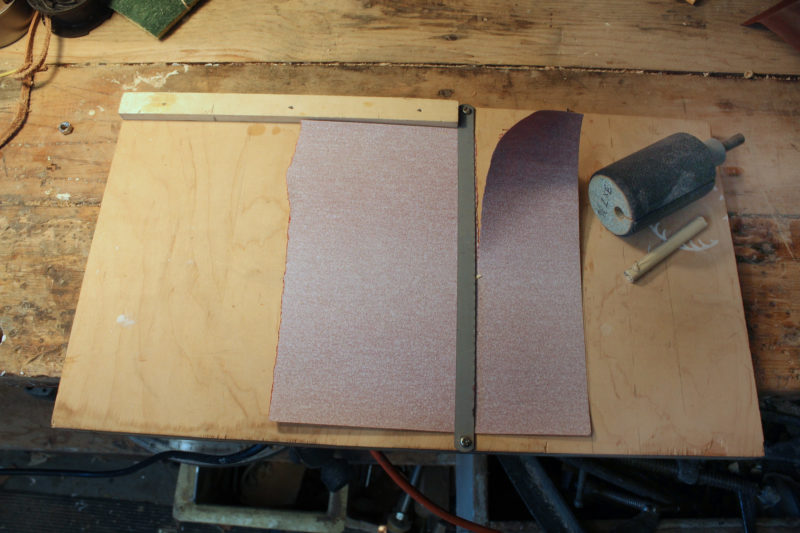
I can quickly tear strips of sandpaper using a jig that has a fence and a hacksaw blade loosely screwed to a piece of plywood.This side of the board works for the 3″ x 7-3/4″ strips I need for the 2″ drum.
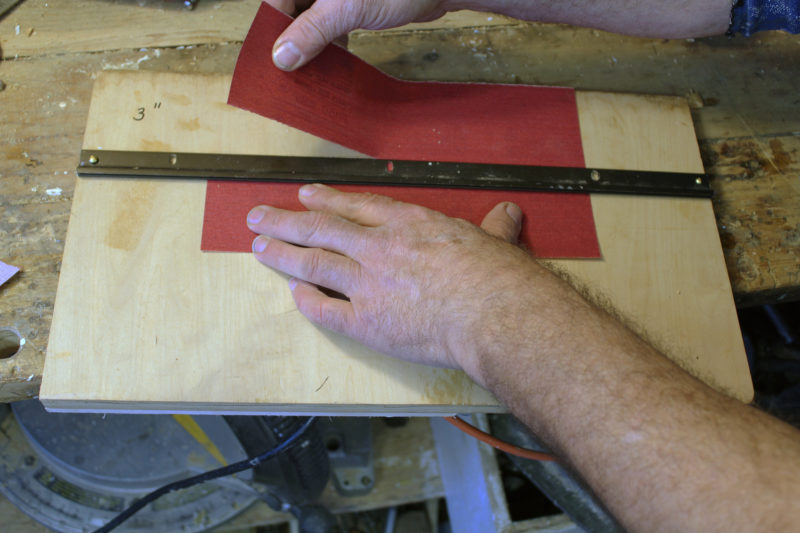
For the 3″ x 11″ strips I need for the 3″ drum, I have a metal strip screwed to the board 3″ from one edge
The sheet sandpaper isn’t as durable as sanding sleeves and requires a lighter touch, but the flexibility of the paper and the cushioning of the rubber behind it allow the sandpaper to mold to the contours of the workpiece. I can sand rounded edges without making unsightly, unwanted facets. I spin the drums on my drill press when working small pieces; when I need to bring the drum to the work—e.g., for smoothing oar blades and stem heads, or sanding frame ends sandwiched between inwales and outwales—I chuck the 2″ sanding drum into an electric drill.
It is important to secure the sandpaper tightly on the drum. If it is loose, it will begin to pucker, the puckers will turn to creases, and eventually those will wear through. The damage occurs on the trailing end of the sandpaper, so even when it begins to wear out and tear, the drum will still pull it and do useful work. I can get a couple of strips for the drums out of a single sheet of sandpaper, so the cost is pennies per strip, far cheaper than the cost of sanding sleeves.
My oldest sleeveless sanding drum has been among the most-used and longest-lasting tools in my shop and does finish sanding on many projects much faster than I can do by hand.![]()
Christopher Cunningham is the editor of Small Boats Monthly.
Sleeveless sanding drums are available in a number of sizes from several sources. I bought my 3″ x 3″ drum from Lee Valley for $23.50 plus shipping.
Is there a product that might be useful for boatbuilding, cruising or shore-side camping that you’d like us to review? Please email your suggestions.




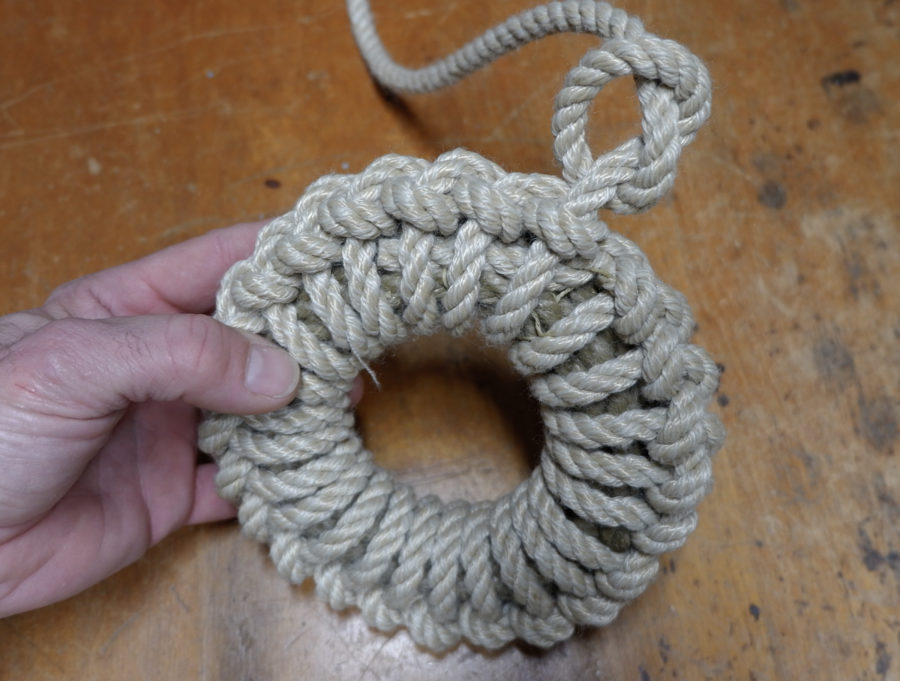

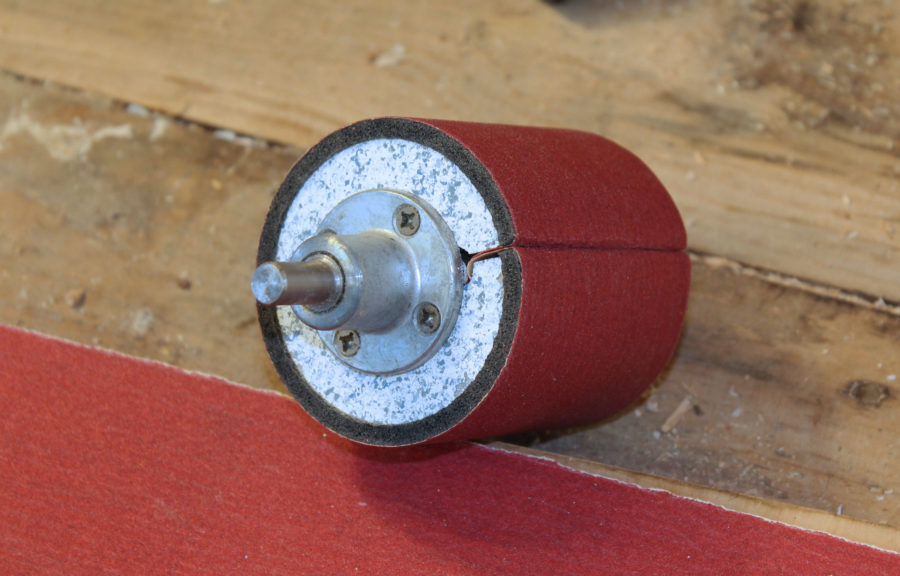
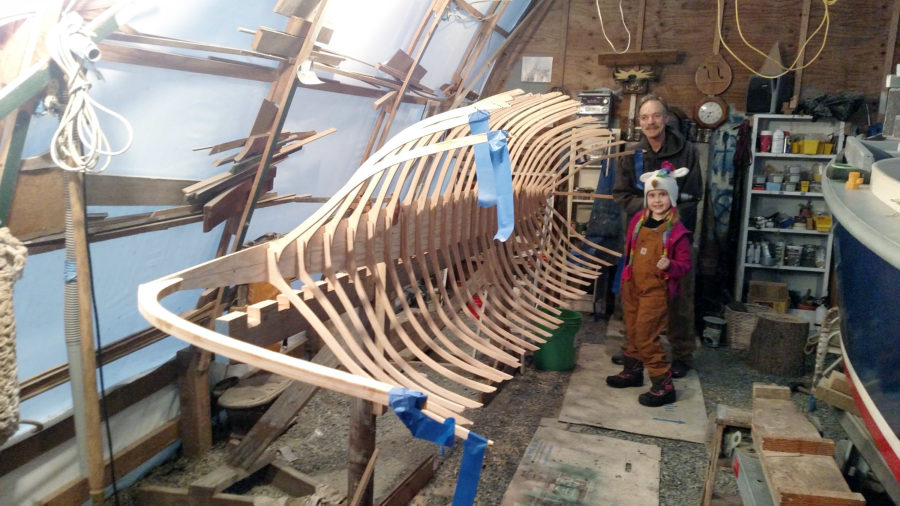

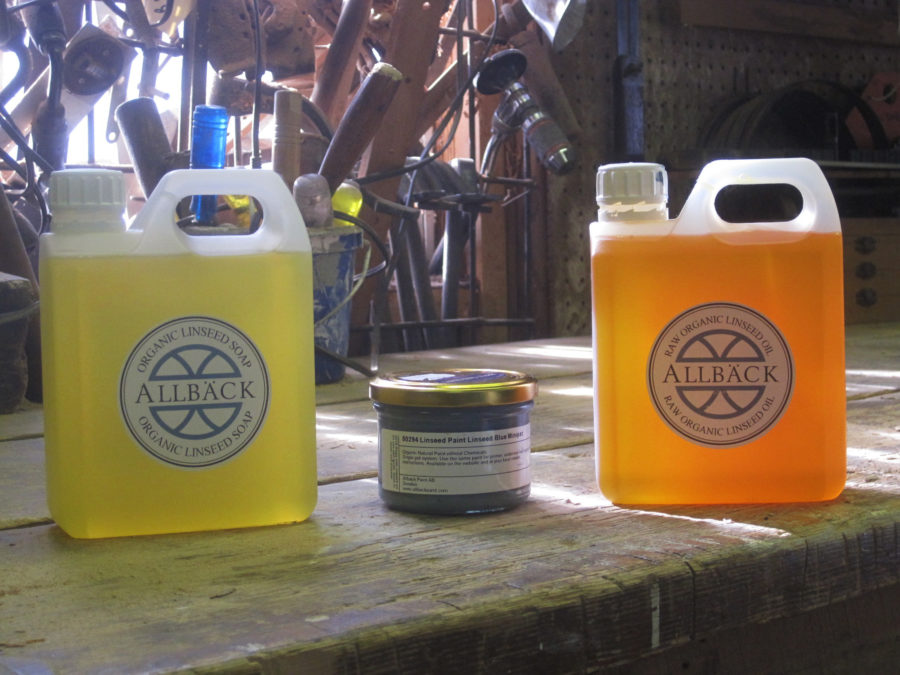
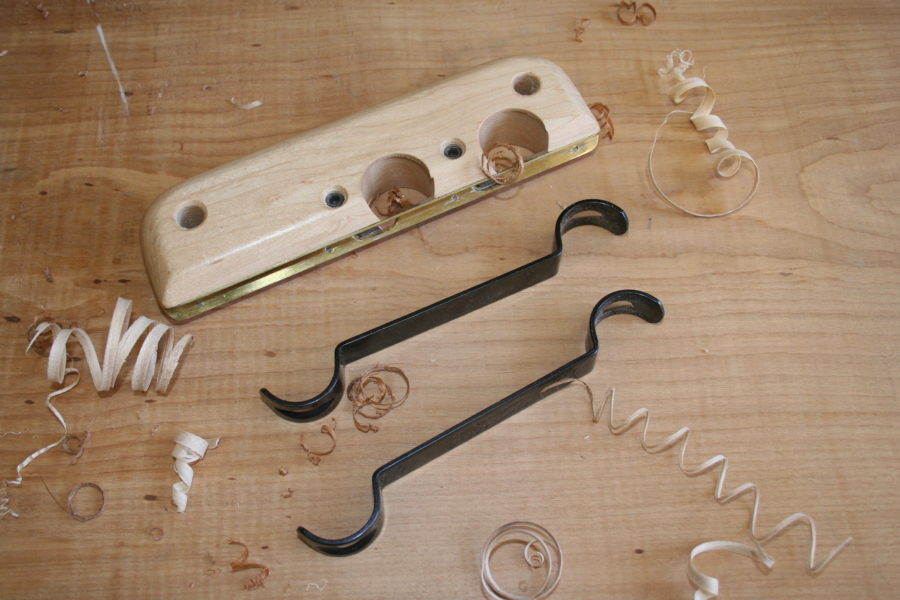
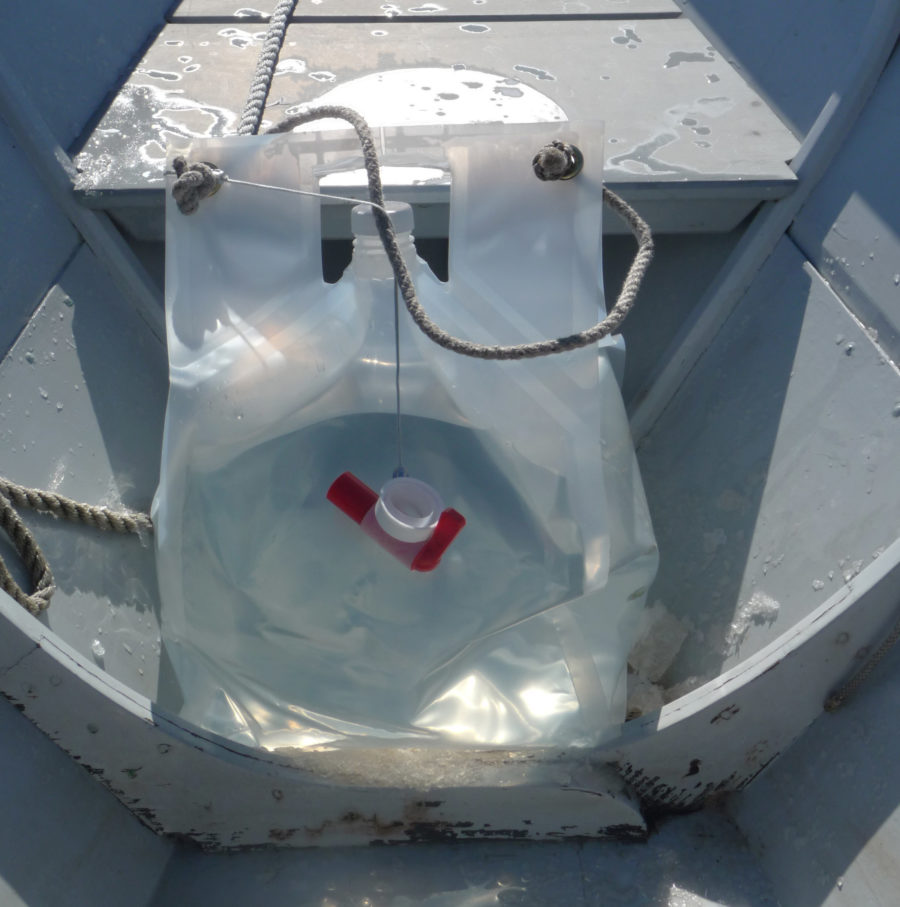
I’ve used them for years, professionally finishing bandsawn boxes. I found the best abrasive to be cut up cloth-backed belt sander belts or what is sold here in Australia as J weight paper, cloth backed but much more flexible than sander belts. Much better on the smaller sizes.